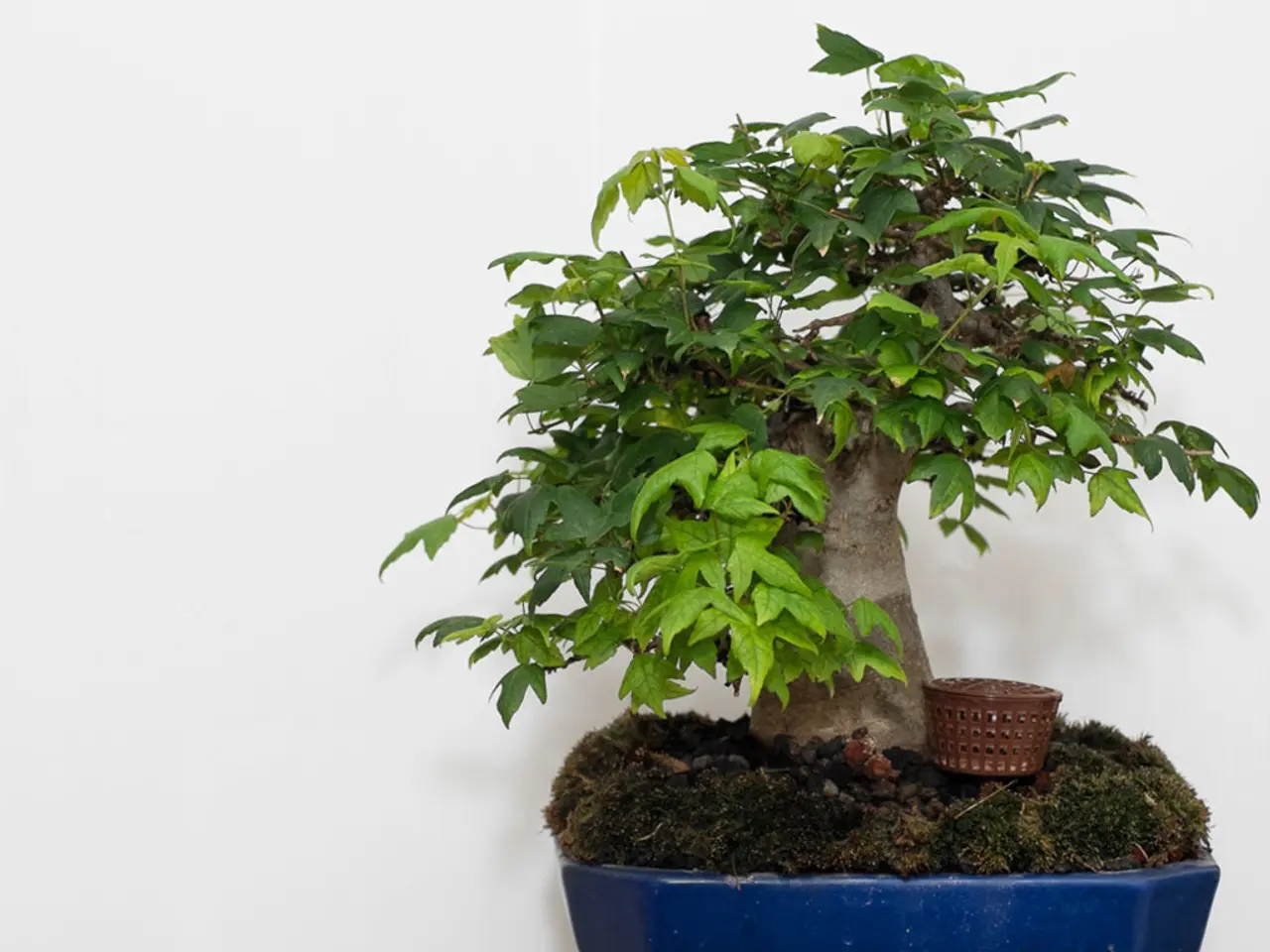Vivid Bonsai Trees: Varieties Famous for their Vibrant Flowers and Fruits
In the world of bonsai, the art of cultivating flowering and fruiting species is a delicate dance between the gardener and the tree. To achieve optimal growth and colorful displays, a combination of proper plant selection, careful pruning, appropriate soil and watering practices, balanced fertilization, correct sunlight exposure, and seasonal care is essential.
Choosing the Right Species and Healthy Stock
Start with young, healthy nursery stock suited for bonsai training, especially species known for their flowers or fruits like fuchsias or certain fruit trees.
Sunlight
Provide 4 to 6 hours of bright, indirect sunlight daily. For flowering bonsai, adequate sunlight is critical to promote blooming and fruiting. Indoor bonsai should be placed near east or west-facing windows for balanced light, while outdoor bonsai may prefer semi-shaded areas depending on the species.
Soil
Use a well-draining, airy bonsai soil mix to prevent root rot and promote healthy root growth. Good mixes include components like akadama, pumice, lava rock, or perlite. For flowering bonsai like fuchsia, a peat-based compost combined with loam, grit, perlite, and charcoal maintains soil health and moisture balance.
Watering
Maintain consistently moist but not waterlogged soil—water thoroughly when the topsoil just begins to dry out. For species like fuchsia bonsai, never let the soil dry out completely and water preferably in the morning.
Pruning and Shaping
Regular pruning of branches and leaves controls size and encourages flowering. Removing growing tips can delay flowering temporarily to promote fuller blooms later. Root pruning during repotting maintains compact root systems. Wiring helps guide branch shape but must be done gently to avoid damage.
Fertilizing
Feed with a balanced, diluted liquid fertilizer during the growing season. For flowering bonsai, a formula like NPK 20-20-20 at quarter strength twice weekly encourages healthy growth and blooms. Occasional supplements like iron chelates improve foliage color and vigor.
Seasonal Care
Deciduous species benefit from removing old leaves and flowers in late autumn and appropriate winter pruning to prepare for the next growth cycle. Protect tender flowering bonsai from harsh sun or temperature extremes by placing in shaded or sheltered locations during hot or cold periods.
Understanding the Tree's Natural Cycles
Attuning oneself to the tree's innate cycles allows for the creation of an environment conducive to ideal growth. Cherry Blossom blooms in early Spring and fruits in late summer, Japanese Maple blooms in mid-Spring and fruits in early fall, Satsuki Azalea blooms in late Spring and fruits in mid-summer. The time it takes for a new Bonsai to produce flowers or fruits varies depending on the species, age, and growing conditions, typically ranging from 1-5 years.
Optimizing a Bonsai's Blooming Window
Optimizing a Bonsai's blooming window requires species-specific timing, environmental cues management, nutrient and water management, pruning and training. Monitoring and responding to environmental factors like temperature and moisture is necessary to maintain ideal conditions for the species. When limited natural light is a constraint, selecting species tolerant of low-light conditions and providing supplemental lighting is necessary.
In summary, cultivating vibrant flowering and fruiting bonsai requires consistent, attentive care tailored to each species' light, water, soil, and nutrient needs, combined with strategic pruning and shaping throughout the year. These practices help balance growth with flowering to produce colorful, healthy displays.
In the realm of bonsai cultivation, understanding the tree's natural cycles is crucial for creating an optimal growing environment for flowering and fruiting species. For instance, Cherry Blossom blooms in early spring and fruits in late summer.
A balanced diet rich in essential nutrients is essential for maintaining healthy growth and vibrant blooms. A diluted liquid fertilizer with an NPK ratio of 20-20-20, utilized during the growing season, promotes growth and blooms for flowering bonsai.
Fashion-and-beauty extended into floral displays can be maximized with the proper selection of species. Fuchsias, known for their attractive flowers, are ideal candidates for bonsai training.
The lifestyle of a dedicated bonsai gardener often involves a commitment to regular watering, pruning, and fertilizing practices, as well as understanding each species' specific needs for light, soil, and seasonal care. This commitment allows for amazing food-and-drink-like blooms and fruits to grace one's home-and-garden.





